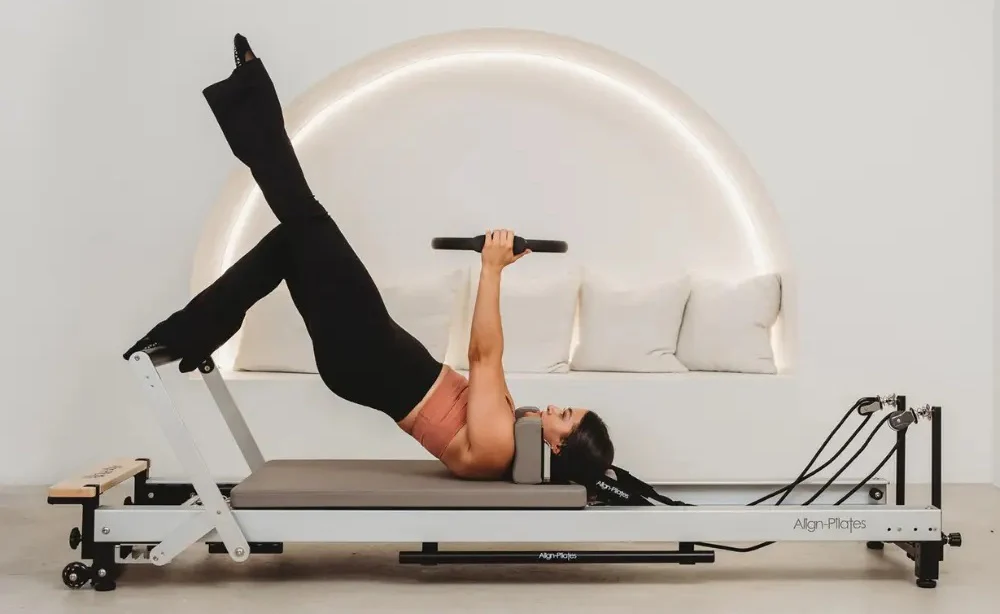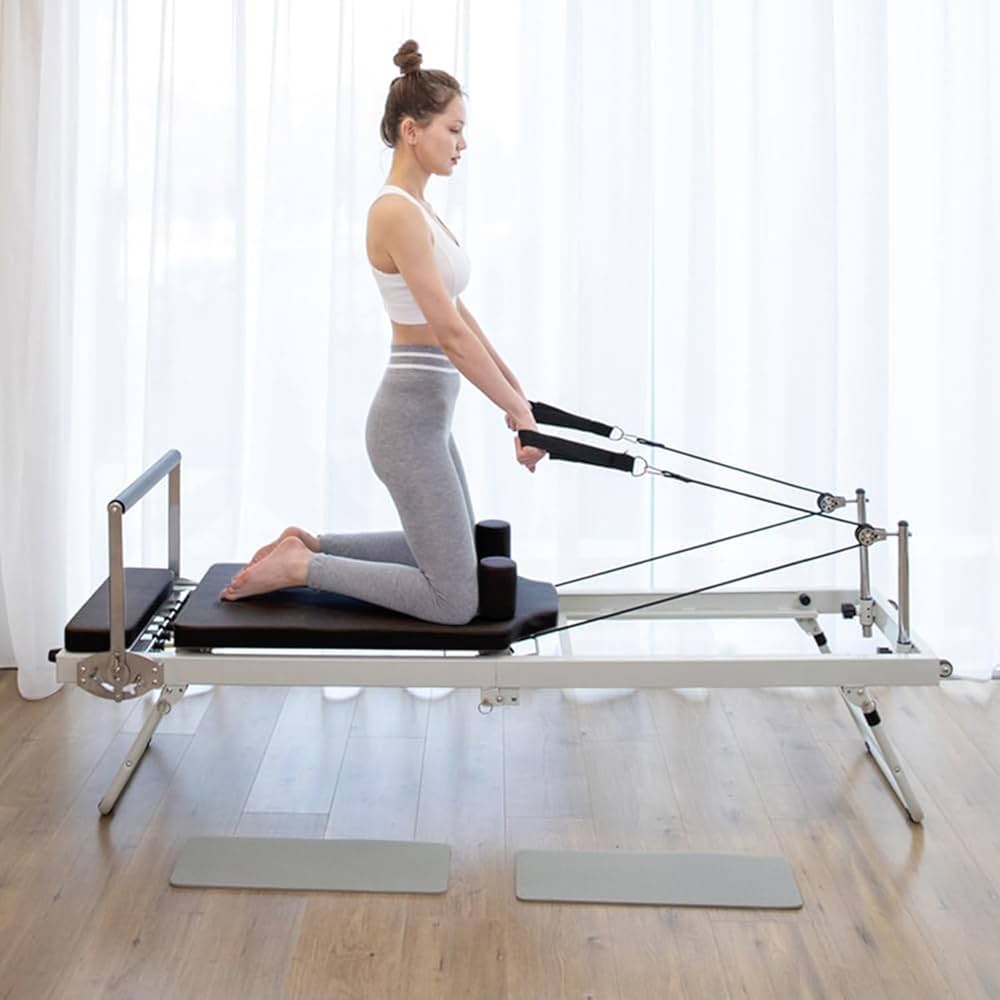Welcome to your guide on using a Reformer Pilates bed effectively! If you’re excited about improving your strength, flexibility, and overall body awareness, you’re in the right place. The Reformer Pilates bed is a versatile piece of equipment that can help you achieve a full-body workout, tailored to your individual needs. In this article, we will delve into the fundamentals of the Reformer, offer tips on various exercises, and share how to seamlessly integrate this incredible tool into your fitness routine. Let’s jump in!
Understanding the Reformer Pilates Bed
The Reformer Pilates bed is a specially designed piece of fitness equipment that utilizes springs and a sliding carriage to provide resistance. At first glance, it may look like a simple bed frame with straps, but it offers a wealth of functionalities that can enhance your workout experience.
Typically made from sturdy materials like wood or aluminum, the Reformer features a padded platform, which allows you to perform a variety of movements. Each of its components has a purpose; for example, the springs help provide adjustable resistance, allowing users of all levels—from beginners to advanced practitioners—to engage effectively. Understanding these elements is crucial as you learn to maneuver the equipment safely and efficiently.
Another important aspect to note is the inherent versatility of the Reformer. You can perform countless exercises focusing on different muscle groups, making it a fantastic option for a full-body workout. Before you start, take a moment to familiarize yourself with how to adjust the footbar and the springs, as this will enable you to customize your workout according to personal preferences and fitness goals. The Reformer also allows for modifications, which means you can tailor each exercise to accommodate any physical limitations or injuries, making it an inclusive option for many fitness enthusiasts.
How to Set Up Your Reformer
Now that you grasp the basics of what a Reformer is let’s discuss how to set it up for your workout. Start by placing your Reformer on a flat surface, making sure there’s ample space around it. Ideally, you should have enough room to stretch out fully without any obstructions. Adjust the footbar based on your height, ensuring that it’s comfortable to reach while you’re lying back on the carriage.
Next, take a look at the resistance springs. If you’re new to Reformer Pilates, starting with lighter springs can make your initial experience enjoyable and safe. As you grow more comfortable and confident, feel free to increase the resistance for more of a challenge. A common method is to begin with one red spring (or the equivalent light spring) for foundational exercises to gauge your strength. Additionally, understanding the color coding of the springs can help you quickly adjust your resistance levels, as different colors correspond to varying degrees of tension, allowing for a more intuitive workout experience.
Finally, double-check all the equipment. Ensure everything is secured, and familiarize yourself with the straps—this will provide peace of mind as you dive into your workout! It’s also beneficial to have a small towel and water bottle nearby to keep yourself hydrated and comfortable throughout your session, as Pilates can be quite engaging and may lead to a good sweat.
Basic Exercises for Beginners
If you’re new to Reformer Pilates, focusing on foundational exercises is crucial for building your strength and mastering proper form. Begin by lying on your back on the carriage and placing your feet on the footbar, about shoulder-width apart. Start with exercises like the “Footwork.” It’s simple yet effective! Push through your heels and extend your legs, then bend your knees and return to the starting position. This will strengthen your calves, hamstrings, and glutes as you progressively increase the spring resistance.

Another great starter exercise is the “Bridge.” Lie on your back, feet on the footbar, and hips firmly pressed down into the carriage. Engage your core and pelvis, and push up through your heels to lift your hips towards the ceiling. This wonderfully targets your lower back, glutes, and hamstrings, promoting overall body awareness. As you master this movement, you can experiment with variations, such as single-leg bridges, which will further challenge your balance and stability.
As you become more comfortable, you can join in on exercises like “The Hundred” and “Leg Circles,” which help improve endurance and stability. Remember, perfecting your form is essential for reaping the maximum benefits from your workout. Additionally, incorporating breathing techniques into your practice can enhance your performance; inhaling deeply during the preparation phase of an exercise and exhaling during exertion can help you maintain control and focus throughout your movements. This mindful approach not only elevates your workout but also fosters a deeper connection between your mind and body.
Progressing Your Reformer Exercises
Once you’ve mastered the basic exercises, you can begin to introduce more challenging movements. One effective way to progress is by increasing the resistance of the springs. This might seem daunting, but gradually incorporating more resistance can significantly improve strength and stability.
Additionally, you can explore the use of the Reformer’s various accessories, such as the jump board or the box, to vary your exercises. Using a jump board, for instance, adds a cardio element that integrates well into your strength training routine, while the box allows for more advanced variations of exercises like squats or lunges.
Don’t forget to listen to your body. If an exercise feels too strenuous or uncomfortable, don’t hesitate to regress to a simpler form or adjust the resistance. Lastly, consider attending a class or hiring a qualified instructor for personalized guidance as you progress. There’s nothing quite like the support of a knowledgeable mentor!
The Importance of Cool Down and Stretching
After a hearty workout on the Reformer, it’s essential to cool down and stretch your muscles. Many beginner practitioners overlook this important step, but taking the time to stretch can help facilitate recovery while enhancing flexibility.
Incorporate stretches focusing on the muscles you’ve worked during your session. For instance, lying on your back, grab your one knee with both hands, gently pulling it towards your chest. This can help relieve tension in your lower back and pelvis while promoting relaxation.
In addition, consider basic spinal mobility exercises, which can restore alignment and flexibility to your spine after rigorous workouts. Sitting on the carriage and performing gentle twists can be highly beneficial. Remember, your body deserves that kindness after a good workout!
Integrating Reformer Pilates into Your Fitness Routine
Seamlessly incorporating the Reformer into your fitness routine can lead to numerous benefits. Whether you’re a seasoned athlete or just starting on your fitness journey, Reformer Pilates is an excellent complement to other forms of exercise, like cardio or strength training.
To get started, schedule Reformer sessions throughout your week, aiming for at least two to three classes. This allows your body to adapt while still offering enough recovery time between sessions. As your comfort with the Reformer grows, you may want to integrate it into your workouts, mixing it with your favorite strength training exercises.
Remember to set realistic goals based on your fitness level and experience. Consistency is key, and progress takes time. Celebrate small milestones along the way, whether that’s mastering a new exercise or feeling stronger during your workouts.

The Benefits of Reformer Pilates
The benefits of Reformer Pilates are vast and genuinely transformative! This method helps improve core strength, flexibility, and overall body alignment. It promotes muscle tone and endurance while minimizing the risk of injury—a win-win for everyone!
Moreover, Reformer Pilates fosters mindfulness as you learn to listen to your body while moving through exercises. Embracing this present-moment practice strengthens not just your physical but also your mental resilience.
If you’ve been searching for a workout regime that provides variety, strength, and flexibility training, look no further than the Reformer Pilates bed. It integrates seamlessly into your lifestyle and adapts to your unique fitness journey.
With these insights, you’re all set to embark on your Reformer Pilates adventure! Empower your body and mind through thoughtful practice, and enjoy every moment of your transformation. Happy exercising!
See also: Pilates ring vs. Magic circle: What’s the difference?
